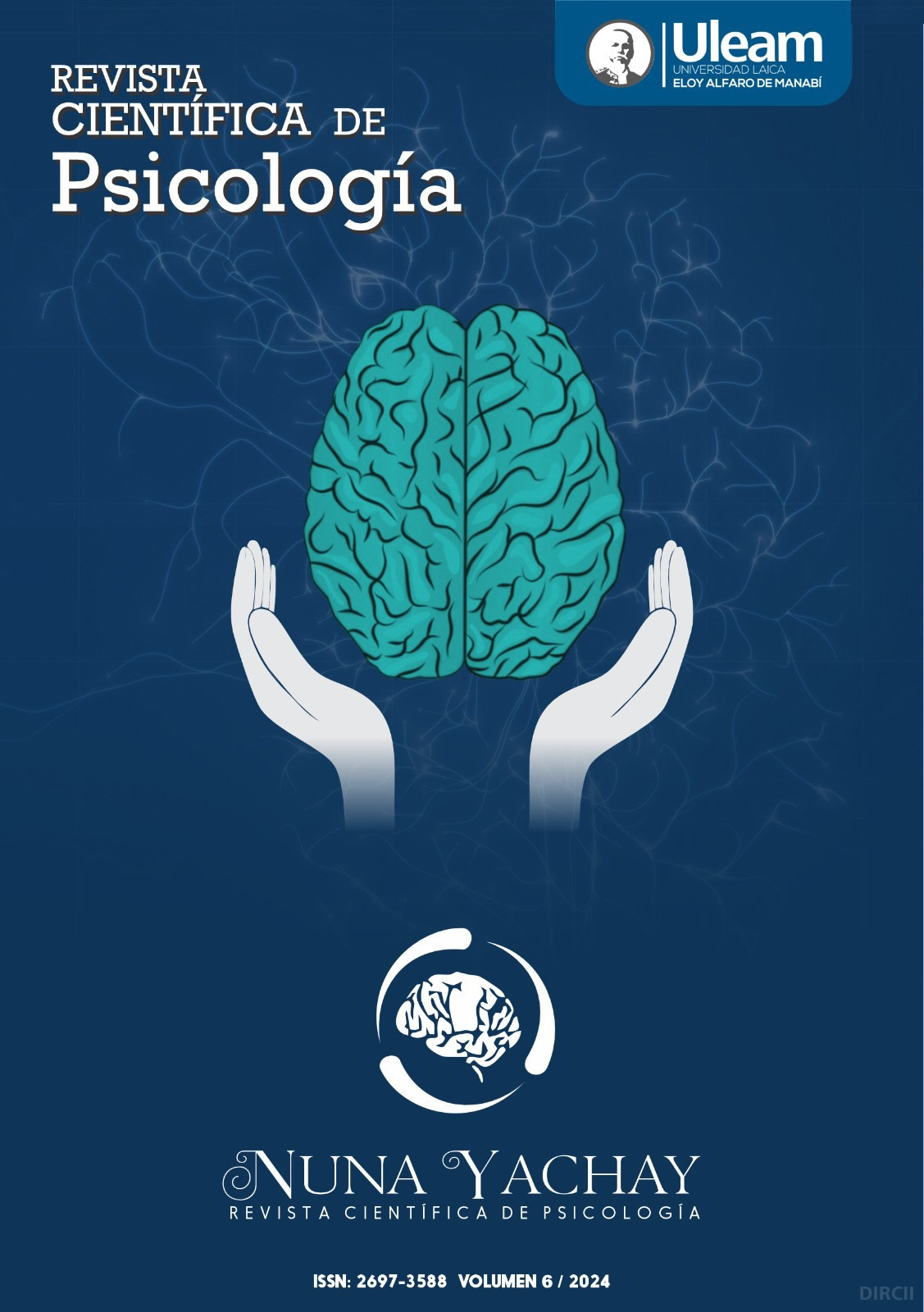Virtual Reality and Cognitive Behavioral Therapy in the Treatment of Anxiety. Narrative Review
DOI:
https://doi.org/10.56124/nuna-yachay.v6i11.005Keywords:
anxiety, cognitive behavioral therapy, virtual reality, mental disorders, treatmentAbstract
Anxiety is a common mental health condition that affects a large percentage of the global population, manifesting in forms such as generalized anxiety disorder, specific phobias, and panic disorders. This prevalence has increased in recent years due to factors such as the COVID-19 pandemic, which has exacerbated anxiety conditions, and the limited availability of mental health services in many regions. In Ecuador, it is estimated that around 12% of the population suffers from some type of anxiety disorder, underscoring the urgent need for more effective and accessible interventions to treat this condition. The objective of this article is to review the efficacy of Cognitive Behavioral Therapy (CBT) combined with Virtual Reality (VR) in the treatment of anxiety, evaluating its ability to improve therapeutic outcomes compared to traditional CBT techniques. This work is framed as a narrative review that collects and analyzes recent studies on the use of VR as a complementary tool in CBT for the treatment of anxiety. The combination of VR with CBT has been shown to significantly reduce anxiety symptoms and improve treatment adherence, making it a promising and innovative approach for the treatment of anxiety in diverse contexts, especially those with limited resources
Downloads
References
Brito, Héctor, & Vicente, Benjamín. (2018). Realidad virtual y sus aplicaciones en trastornos mentales: una revisión. Revista chilena de neuro-psiquiatría, 56(2), 127-135. https://dx.doi.org/10.4067/s0717-92272018000200127
Chacón, E., De La Cera, D., Fernández, M., & Murillo, R. (2021). Generalidades sobre el trastornos de ansiedad. Revista Cúpula, 35(1), 23-36. https://doi.org/https://doi.org/https://www.binass.sa.cr/bibliotecas/bhp/cupula/v35n1/art02.pdf
De Jesús-Romero, R., Holder, A., Buss, J., & Lorenzo, L. (2023). Race, Ethnicity, and Other Cultural Background Factors in Trials of Internet-Based Cognitive Behavioral Therapy for Depression: Systematic Review. JMIR, 25, e50780. https://doi.org/https://dx.doi.org/10.2196/50780
Emmelkamp, P., Meyerbroker, K., & Morina, N. (2020). Virtual Reality Therapy in Social Anxiety Disorder. Current psychiatry reports, 22(7), 32. https://doi.org/https://pubmed.ncbi.nlm.nih.gov/32405657/
Feixas, G., & Alabernia, J. (2021). Aportaciones de la tecnología a la psicoterapia: el potencial de la realidad virtual. Revista de Psicoterapia, 32(119), 81-93. https://doi.org/https://doi.org/10.33898/rdp.v32i119.859
Frías, L. (14 de Marzo de 2019). Gaceta UNAM. https://www.gaceta.unam.mx/mas-de-264-millones-padecen-ansiedad-a-nivel-mundial/
Habigzang, L., & Peterson, M. (2019). Terapia Cognitivo Conductual para mujeres que sufrieron violencia por su pareja íntima: Estudio de casos múltiplos. Ciencias Psicológicas, 13(2), 249-264.
Macías, M., Pérez, C., López, L., Beltrán, L., & Morgan, C. (2019). Trastornos de ansiedad: revisión bibliográfica de la perspectiva actual. eNeurobiología, 10(24).
OMS. (8 de Junio de 2022). Organización Mundial de la Salud. https://www.who.int/es/news-room/fact-sheets/detail/mental-disorders#:~:text=En%202019%2C%20301%20millones%20de,por%20trastornos%20del%20comportamiento%20conexos.
Porter, R., Beaglehole, & Baghaei. (2023). Virtual reality technology in the treatment of anxiety – progress and future challenges. Expert Review of Neurotherapeutics, 23(12), 1047–1049. https://doi.org/https://doi.org/10.1080/14737175.2023.2289574
Román, V. (21 de Mayo de 2022). Infobae. https://www.infobae.com/america/ciencia-america/2022/05/21/por-la-pandemia-la-ansiedad-y-la-depresion-aumentaron-mas-del-32-en-america-latina/#:~:text=Se%20estima%20que%20el%20trastorno,de%20la%20Salud%20(OPS).
Schroder, D., Wrona, K., Muller, F., Heinemann, S., Fischer, F., & Dockweiler, C. (2023). Impact of virtual reality applications in the treatment of anxiety disorders: A systematic review and meta-analysis of randomized-controlled trials. Journal of Behavior Therapy and Experimental Psychiatry, 81. https://doi.org/https://doi.org/10.1016/j.jbtep.2023.101893
Sousa, R., Campanari, R., & Rodríguez, A. (2021). La realidad virtual como herramienta para la educación básica y profesional. Revista Científica General José María Córdova, 19(33), 223-241.
Szyhany, K., & Simon, N. (2022). Anxiety Disorders A review. JAMA, 328(24), 2431-2445. https://doi.org/doi:10.1001/jama.2022.22744
Tuarez, G., Mero, G., Saldarriaga, M., & Castro, J. (2022). Epidemiología de los problemas mentales: Factores de Riesgo y Causas en Habitantes de Latinoamérica. Revista Higía de la Salud, 7(2). https://doi.org/https://doi.org/10.37117/higia.v7i2.752
Published
How to Cite
Issue
Section
License
Copyright (c) 2024 Revista Científica y Arbitrada de Psicología NUNA YACHAY - ISSN: 2697-3588.

This work is licensed under a Creative Commons Attribution-NonCommercial-ShareAlike 4.0 International License.






3.jpg)











